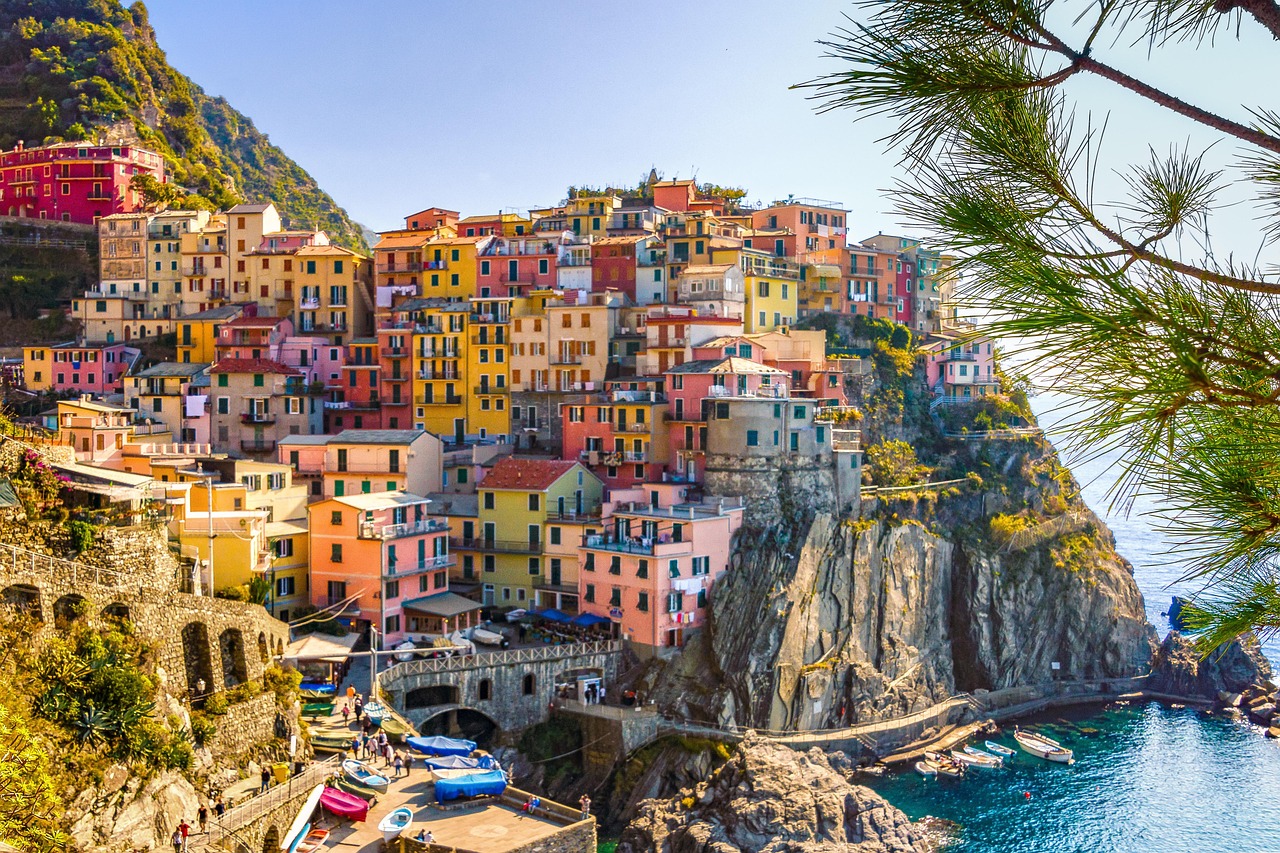Explore holidays in Tuscany
From the moment you arrive in Tuscany, you are invited to share in its grand passions and indulgent pleasures – world-famous wine, mouth-watering food and epic histories. Each of Tuscany’s ten provinces has its own unique personality, but wherever you stay, you’ll find yourself surrounded by a verdant patchwork of olive groves, cypress trees and vineyards. From the birthplace of the Renaissance, Florence, to the narrow streets of hilltop San Gimignano, Tuscany makes for a stunning escape.

Introduction to Tuscany
Where pleasure takes priority
How it’s possible for any kind of ‘normal’ life to take place in Tuscany remains a mystery. With its undulating landscape where solitary villas or ancient hilltop towns sit perched in splendid isolation, this is a place for epic histories and fine romance; surrounded by a verdant patchwork of olive groves, cypress trees and vineyards, hours should be consumed with feasting and fine wines – and then gently walking or sleeping it off. And as a destination with breathtakingly beautiful art and architecture, surely the only way to spend a day is in a state of wonder? Tuscany gives you permission to indulge in the pleasure of doing it all.
Your first ports of call
Strict building regulations ensure that Tuscany’s ten provinces remain beautifully unspoilt, but with 23,000 square kilometres to explore, where do holidays begin? For many, this journey of 1,000 experiences begins with the unmissable trinity of Florence, Siena and San Gimignano.
Tuscany’s capital and the birthplace of the Renaissance, Florence, is a living art gallery, whilst Siena, known for its expansive piazza, superb duomo and Il Palio, the white-knuckle horse race, is a time-slip into the Middle Ages. The towers and narrow streets of small, hilltop San Gimignano are from the same era and crammed with opportunities to shop, eat and admire historic frescoes, along with stunning views.
Chianti, for the ultimate tipple
Tuscan life flows on its world-famous wines and Chianti, tucked between Florence and Siena, is the epicentre. Medieval Greve is seen as the gateway to this region with a wine museum, impressive September wine festival and plenty of restaurants around its triangular porticoed piazza for sampling the grape and the good.
Historic Panzano nearby hosts the Vino al Vino, an annual gathering of winemakers for tastings and live jazz, and Radda in Chianti, from its beautiful hilltop location, also pays regular homage to its local producers, hosting the Radda nel Bichiere in June. To see the wineries in action, time your holiday to coincide with the grape harvest in late August/September.
When in Florence…
Home to Michelangelo’s David and paintings by the likes of Da Vinci, Botticelli and Caravaggio, Florence is one of Europe’s finest cities of art. And yet with its iconic Duomo, churches, and squares, not least the famous Piazza della Signoria – a social hub since the 13th-century – masterpieces are everywhere. And this is a place to be sociable. There’s a lively nightlife and countless restaurants, café’s and wine bars. And from the jewellery for sale along the famous Ponte Vecchio to the designer boutiques – this was the birthplace of Gucci after all – a chance to shop is never far away.
Tuscany for tots, tweens and teens
From children’s activity packs and interactive exhibits in museums to the world’s best gelati, Tuscany caters for the younger generation – and welcomes them like a favourite grandchild in restaurants. Of course the whole region is a history lesson brought to life and climbing historic towers and medieval fortresses can be fun, but if that doesn’t cut it for older children, there are street parties and lively festivals, bike rides along Lucca’s ancient walls, Siena’s exciting Palio horserace or, south of the city, the adventure park of Saltalbero, in the spa town of Rapolano Terme, with tree walks and horseriding.

Towns and villages in Tuscany
Arezzo
Gold has made Arezzo one of the wealthiest towns in Tuscany, but the history of its impressive Duomo, churches, museums, Medici fortress and ruined Roman amphitheatre enriches it still further. The rather magnificent sloping Piazza Grande, which appeared in the film Life is Beautiful, plays hosts to an antiques fair on the first weekend of the month and the highly competitive Joust of the Saracen tournament in June and September, with fully costumed medieval pageantry, is not to be missed.
Cortona
St Francis of Assisi chose hillside Cortona as the location for his first monastery in 1211. However, the city dates originally from Etruscan times and impressive tombs from that era are part of the sprawling valley view below. Presided over by the imposing Palazzo Comunale, the main square is at the heart of community life. And being near Montepulciano and Montalcino, there are great reds on offer in the many restaurants. In June, the city hosts the film and arts Tuscan Sun Festival.
Lucca
A walk along the Renaissance walls is one of the must-dos in Lucca, the birthplace of Puccini. However, the town itself is an easy day of strolling with its cobbled streets, charming squares and lovely gardens. It also has its own share of churches and museums. Explore the 11th-century cathedral and bell tower and the beautiful Palazzo Pfanner, from Portrait of a Lady, starring Nicole Kidman. And between café stops, there’s retail therapy along the Via Fillungo.
Florence
On the banks of the Arno, over which the jewellers of the Ponte Vecchio ply their trade, Florence’s iconic architecture, art and sculpture alone will absorb you for hours, from its magnificent domed cathedral and bustling Piazza della Signoria to The Birth of Venus. But lovers of beauty in all its forms will find a home here, be it in a designer boutique, strolling the famous Boboli Gardens or in one of the many restaurants, where world-famous food takes centre stage.
San Gimignano
Once there were 72 towers in this pretty hilltop town, built in the 13th century as symbols of power between wealthy local families; now only 16 remain standing. Climb the Torre Grossa, the highest, for a bird’s eye view of the town and then explore the little shops and restaurants tucked along the narrow streets below. The historic centre is a World Heritage Site, which includes the ornate Duomo, Collegiata di Santa Maria Assunta, and the Musei Civici.
Siena
Bankers and merchants brought Siena its wealth, embodied in its grand Piazza del Campo, the site of the Palio, the famous bareback horse race. This medieval city is also known for its sumptuous Duomo, intended to be “the greatest monument to Christianity” and it’s certainly a city that rivals Florence for its art. Sample it at the Pinacoteca Nazionale or the Santa Maria Scala. However, to really get to know Siena, simply wander, sipping, dining and shopping along the way.

